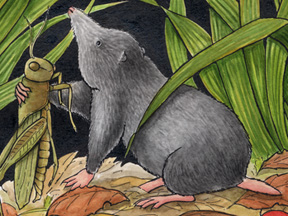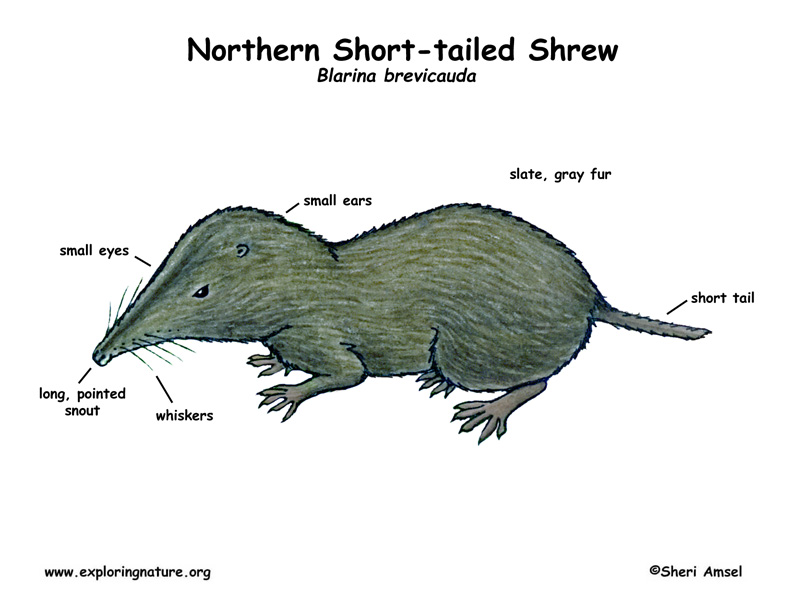

They are found in North America from the east coast to the Midwest (Nebraska) from southern Canada to southern U.S. (Georgia).
They live in wetlands, moist woods, and bushy edges of fields. In developed areas, they can be found living in gardens, farms and on roadsides and taking shelter in barns and out buildings in colder weather.
They are large, gray shrews reaching 4 inches (10 cm) long and weighing up to an ounce. They have a short tail and tiny eyes and ears.
They build tunnels under the leaf litter or rotten logs on the forest floor and under the snow in winter. They nest under rotten logs or rock piles.
They eat insects, snails, spiders, mice, frogs, birds, snakes, and even other shrews. They are able to catch larger prey because their bite releases a toxin (in their saliva) that will make the prey sleepy. They will also eat plant matter and need to eat constantly to maintain their body weight. They may eat as much as 3 times their body weight every day.
They are killed by owls, hawks, weasels, snakes, bobcats, foxes, coyotes and house cats. They are sometimes killed by predators and not eaten because of their musky odor.
Females are pregnant for 3 weeks (gestation) and give birth to up to 10 babies per litter in nests made of shredded grass and leaves. They nurse for about 3 weeks. Females will have up to 3 litters throughout the spring and summer if there is food available. By 6-9 weeks old, females can start having young themselves.
They live only 1-2 seasons. They are listed as Lower Risk - Least Concern on the IUCN Red List.
Kingdom: Animalia
Phylum: Chordata
Subphylum: Vertebrata
Class: Mammalia
Order: Soricomorpha
Family: Soricidae
Subfamily: Soricinae
Genus: Blarina
Species: B. brevicauda
When you research information you must cite the reference. Citing for websites is different from citing from books, magazines and periodicals. The style of citing shown here is from the MLA Style Citations (Modern Language Association).
When citing a WEBSITE the general format is as follows.
Author Last Name, First Name(s). "Title: Subtitle of Part of Web Page, if appropriate." Title: Subtitle: Section of Page if appropriate. Sponsoring/Publishing Agency, If Given. Additional significant descriptive information. Date of Electronic Publication or other Date, such as Last Updated. Day Month Year of access < URL >.
Amsel, Sheri. "Shrew (Northern Short-tailed)" Exploring Nature Educational Resource ©2005-2024. December 13, 2024
< http://www.exploringnature.org/db/view/Shrew-Northern-Short-tailed >

